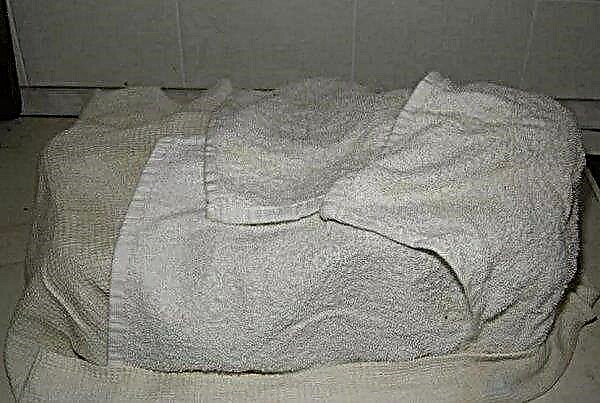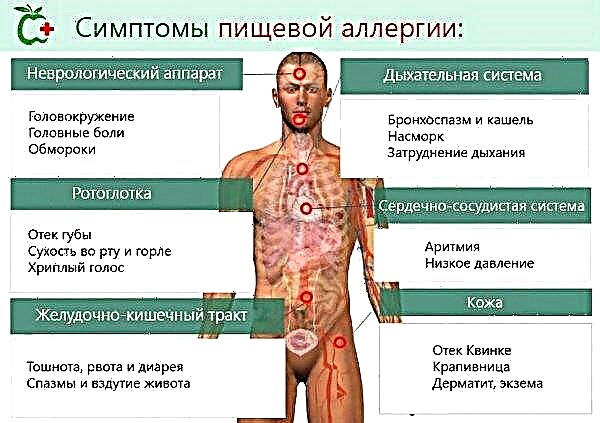“Digging potatoes” is an expression that reflects in the consumer’s mind the full complexity of agricultural work. However, if a small potato bed in a summer cottage can be dug up and processed with your own hands, then when cultivating a field of twenty hundred square meters and above, a technician comes to the aid of a person. How to grow potatoes with a walk-behind tractor at your disposal will be discussed in this review.
Agrotechnical requirements for planting potatoes under a walk-behind tractor
Agricultural technology of planting potatoes does not depend on whether the corresponding work is done manually or in an automated way. The essence of the process in any case is to dig a recess in the soil of a certain size (in the form of a continuous furrow or separate holes), put root crops in it, observing as much as possible equal distance between them, and then again fill the recess with earth. Sometimes falling asleep is carried out by the usual leveling of the soil layer, in other cases, at the place of planting they form a comb (spud).
Did you know? Until the middle of the eighteenth century, potatoes were not very popular in Europe. The well-known propagandist of this culture, the French agronomist Antoine-Auguste Parmantier, defeated the locals' distrust of the new vegetable with the help of cunning: during the day he put up armed guards around the potato field, and at night he removed the guards, as a result, everyone tried to steal and try something that was so carefully guarded.
In addition, at the same time as the tubers are planted in the ground, it is possible to make the necessary top dressing in the form of organic matter or mineral fertilizers. In this case, the nutrient mixture is laid on the bottom of the holes, sprinkled on top with a small layer of soil, and planting potatoes are already laid on top of it. When using agricultural machines in the process of planting potatoes, it is necessary, therefore, that the technical device can ensure the performance of this type of work. Disc walk-behind deviceIn particular, the walk-behind tractor is required to be able to:
Disc walk-behind deviceIn particular, the walk-behind tractor is required to be able to:
- it is guaranteed not to damage the tuber when laying it in the soil, regardless of the size of the potato (root crops with a weight of 30 to 90 g can be used for planting, which is comparable in size to walnuts or chicken eggs, respectively), depending on whether the tuber is planted whole or cut into fragments, as well as from the presence of sprouts on it (the so-called vernalized, or sprouted potatoes);
- adjust the row spacing in accordance with the planned planting pattern, and it is desirable that the error in this case be no more than 2 cm (the width of the butt spacing, that is, the distance between the two extreme furrows made by a potato planter, spudger, plow or other motoblock nozzle, can deviate from the set no more than 10 cm);
- dig a furrow of a certain depth and fill it with a crest of the required height, and in one, and in the other case, the error should not exceed 2 cm;
- to lay tubers at an equal distance from each other with the ability to adjust this distance in steps of at least 5 cm (for example, 20, 25, 30, 35 cm, etc.) and an error of not more than ¼ from a given parameter;
- avoid gaps when laying root crops, which is especially critical when it comes to planting large tubers;
- strictly observe a straight line when laying a furrow, regardless of how fast the walk-behind tractor moves;
- provide local application of organic and mineral fertilizers simultaneously with planting potatoes - both by direct laying in the hole, and dotted on both sides of the tuber (relevant for mineral top dressing), while the technical capabilities of the walk-behind tractor must guarantee the possibility of strict observance of the place of laying (2-3 cm from the root in depth and 5-7 cm to the sides) with an error of no more than 1/10.
Preparing the site for landing
The biggest problems when growing potatoes arise on heavy soil - clay or chernozem. Digging it up is physically very difficult, but meanwhile, root crops make very high demands precisely on the softness, friability and lightness of the soil. Motoblock allows you to solve this problem quickly enough, while experts recommend instead of wheels to equip the device with special milling cutters. Depending on the area of the site, the composition of the soil, the model of the walk-behind tractor and your own preferences, you can prepare the site for future landing in one of two ways:
Depending on the area of the site, the composition of the soil, the model of the walk-behind tractor and your own preferences, you can prepare the site for future landing in one of two ways:
- Dig a continuous area, starting from any point from the edge and moving towards the center with a spiral. After digging, the earth will need to be leveled by changing the nozzle of the walk-behind tractor to a rake.
- Dig in stripes, moving from one edge of the plot to the other, in accordance with the plan of future beds. When using this method, it is necessary to provide from one and the other end of the field small sections up to 2 m long, on which it will be possible to deploy the machine without any problems. Digging of each row is carried out twice - in the forward and reverse direction, while moving backward, one of the milling units of the walk-behind tractor should be directed to the newly dug groove. This precaution ensures the loosening of the soil to the desired depth and ideally prepares the ground for laying the tubers.
Important! The butt spacing when using a walk-behind tractor should be at least 60 cm, otherwise when processing one bed the machine will deform the adjacent one.
A wide distance between the extreme rows will be very useful at the time of harvest: it will be convenient to place dug potatoes and tops in this area.
Methods and technology for planting potatoes
Motoblock - the device is very convenient due to the huge variety of additional attachments that can be used with this machine. Depending on which accessories are available to the farmer, various methods of planting potatoes with a walk-behind tractor can be used.
Video: planting potatoes using a walk-behind tractor
Motoblock with a hiller
Planting potatoes with the help of a nibbler is considered the easiest and cheapest way to use a walk-behind tractor.
There are four main types of ridgers for motoblocks:
Specialists from the Netherlands have developed a fundamentally new type of spouts, which allows you to adjust both the width and depth of capture. At the same time, Dutch nibblers are relatively inexpensive and much more energy efficient than domestic counterparts.
Important! The distance between root crops depends on their size, but should not be less than 20 cm. The optimal depth of the bookmark is from 10 to 15 cm.
Each of the possible types of attachments has its advantages and disadvantages, therefore, choosing an accessory, it is necessary to proceed from the size of the sown area, financial capabilities and other subjective criteria. Planting of potatoes always begins with the layout of future beds. The sequence of actions is as follows:
The sequence of actions is as follows:
- Install lug wheels with extensions on the device instead of conventional wheels.
- If the design of the device requires it (for example, a Neva motor-block), remove the wings and the central stop from the unit, putting a hitch instead, to which the hiller joins.
- Attach the hiller to the walk-behind tractor.
- Set the desired width of the wings (to make it maximum, you need to move the dumps): for a two-row device, it is necessary to provide a row spacing of at least 70 cm, for a single-row, 60–65 cm is enough.
- Start the car in first gear on the marked furrow and start digging the ridge.
- The depth of the furrow is adjusted using the hitch, for this there is a special handle on the device.
- Put the planting tubers into the finished furrow at the same distance.
- When the potato laying is completed, the wings of the hiller should be extended to the maximum distance (on units of the Neva and Salute brands, the distance between the wings remains unchanged, but to dig the furrow, the lug wheels must be replaced with ordinary ones).
- Having directed the walk-behind tractor to the ridge line, they fill the furrow with earth.
In order not to make too wide aisles when using a two-row hiller, some experts recommend disconnecting one of the hills from the device, and install the remaining one in the center. At the same time, you need to work with ordinary, not lug wheels. A similar method, indeed, simplifies the work, but makes it very energy-consuming, since the operating time of the walk-behind tractor doubles.
Important! If potatoes are planted with a walk-behind tractor on the same site for several years in a row, each year it is necessary to change the direction of the rows. Otherwise, a shift of the surface soil layer to one end of the field is inevitable.
Therefore, each farmer can make the best decision for himself - not to purchase a two-row device, to learn how to work with it, despite the difficulties and the large distance between the rows, or to operate the nozzle as an ordinary single-row one.
Video: planting potatoes with a walk-behind tractor
With mounted potato planter
Kartofelesazhalka - a more complex and, accordingly, expensive device, compared with the hiller. In addition to the tiller (in this role, the disk hiller acts), this type of attachment to the walk-behind tractor includes a furrower, a hopper in which tubers are planted for planting, and a conveyor that allows you to direct the potatoes directly into the furrow.
Important! If on a plot of several hundred hectares the hiller justifies itself, then for processing larger areas it makes sense to purchase a potato planter. With its help, in just an hour, you can easily plant potatoes on a field of 12 acres.
Thus, if the hiller assumes the performance of three consecutive actions (we dig, plant, bury), then the potato planter carries out the entire procedure at the same time, only a person needs to follow the process. You can judge whether such a device is worth buying and how quickly it pays off based on these figures: the minimum price on the market for a disk okuchnik starts at $ 15 dollars, while the simplest potato planter costs at least $ 60. When using a potato planter, soil preparation and marking of ridges is carried out in a standard way, there are no differences in this regard. Next, the potato planter must be connected to the walk-behind tractor in accordance with the manufacturer's instructions (it is important that the machine is on a flat surface at the time of assembly). Before starting work, it remains only to make the necessary adjustments: set the parameters of the plow deepening, row spacing, the distance between root crops, as well as the depth, width and angle of attack of the disks that fill the furrow and make a comb.
When using a potato planter, soil preparation and marking of ridges is carried out in a standard way, there are no differences in this regard. Next, the potato planter must be connected to the walk-behind tractor in accordance with the manufacturer's instructions (it is important that the machine is on a flat surface at the time of assembly). Before starting work, it remains only to make the necessary adjustments: set the parameters of the plow deepening, row spacing, the distance between root crops, as well as the depth, width and angle of attack of the disks that fill the furrow and make a comb.
Did you know? The world's most expensive La Bonnotte potato is grown on the small islet Nurmuantier (Atlantic coast of France). A kilogram of very tender and tasty root crops costs about 500 euros, and their annual yield does not exceed 100 tons. Motor-blocks and other equipment are not used for growing vegetables - the fields are processed exclusively by hand, and special seaweed is used as fertilizer.
The final stage is the laying of prepared tubers in a special container (hopper). When the device is ready for operation, it must be installed opposite the beginning of the line of the intended furrow, start the engine and just follow the movement of the machine, observing the progress of landing.
Video: potato planter walk-behind tractor
Easy fit
If the farmer does not have such attachments as an okuchnik or a potato planter, potatoes can be planted using a conventional furrower or a plow, which any craftsman can easily make independently from improvised materials (alloy steel is best suited for these purposes). The technology for planting potatoes under a plow is similar to using a conventional hiller.
Important! All work on planting potatoes under the plow is performed at first speed.
The sequence of actions is as follows:
- Prepare the soil (dig or loosen with a milling cutter).
- Mark out future beds.
- Remove the wheels from the walk-behind tractor and install the lugs in their place.
- Attach a plow to the walk-behind tractor.
- Run the machine along the marking line with a furrow.
- As you dig up or in a separate run, spread the tubers into the furrow at an equal distance from each other.
- Having directed the walk-behind tractor in the opposite direction, install the unit in such a way that when digging the next furrow, the soil extracted from the earth is sent to the first groove, filling it up. The width between the wheels of the walk-behind tractor is the ideal row spacing, therefore, moving strictly along one furrow, it is easy to achieve absolutely even rows.
In addition to those described, there is another way to plant potatoes - in the comb. It is used in very swampy fields, where a strong deepening of root crops can lead to rotting. The essence of the method is that first, using a walk-behind tractor with a hiller or a plow, a standard furrow is cut, then potatoes are laid out, but not in a dug ditch, but on top of an earthen hill raised during plowing. As a rule, the angle of attack of the furrower discs is adjusted so that the height of this hill is from 20 to 30 cm, depending on the degree of swampiness of the soil. The soil for falling asleep tubers is taken from the aisles, so that they rise even higher above ground level.
As a rule, the angle of attack of the furrower discs is adjusted so that the height of this hill is from 20 to 30 cm, depending on the degree of swampiness of the soil. The soil for falling asleep tubers is taken from the aisles, so that they rise even higher above ground level.
Hilling potatoes with a walk-behind tractor
In order to strengthen the root system of the plant, improve its oxygen supply, as well as get rid of weeds in the beds, the cultivation of many crops, including potatoes, is accompanied by such an agricultural technique as hilling.
Important! In order for the earthing up to be as effective as possible, and to make it easier, the ground should be moist, but not so much as to stick to the plow or shovel. Therefore, experts advise doing this work the day after a good rain or heavy watering of the beds.
Hilling is called tumbling around the lower part of the plant trunk an additional layer of loose and well-moistened fertile soil. Technologically, such a process is no less time-consuming than digging the land or planting tubers, so it is also better to automate it in large areas. Motoblock helps to cope with this task. Technologically, the hilling of potato beds with a walk-behind tractor is carried out according to the following scheme:
Technologically, the hilling of potato beds with a walk-behind tractor is carried out according to the following scheme:
- Install the lugging wheels on the machine instead of the usual ones.
- Increase wing grip to maximum.
- Attach a hiller to the machine (single-row equipment is used with conventional rubber wheels).
- Align the machine so that both of its wheels are located on the row spacing.
- Set the first speed and start the engine.
- Moving along the aisle, fill the bottom of the bushes with an additional layer of soil cut by a furrow cutter.
Harvesting potatoes with a walk-behind tractor
The motoblock can be used not only for planting and hilling potatoes, but also for harvesting - perhaps the most time-consuming part of the whole process of growing this crop, since it includes not only digging a very large amount of land, but also strictly controlling that the tubers were not damaged either during their extraction from the soil, or subsequently when the processing of the adjacent row occurs.
Did you know? In order to manually dig potatoes on a plot of one hundred square meters, it is necessary to raise an average of ten tons, and this is only the weight of the soil removed from the garden, not counting the efforts to raise, store and subsequently load the root crops themselves.
The complexity of harvesting is influenced by many factors, in particular:
- soil heaviness;
- the degree of moisture;
- calendar cleaning dates;
- weather (if the rainy autumn, the time for harvesting is very limited, and the process must be accelerated);
- height of potato tops;
- total area and site configuration;
- the presence of stones in the soil, etc.
 As a general rule, potatoes need to be dug up in a period that begins with the tops of the leaves completely drying (biological completion of plant development) and ends with the moment when the average daily temperature drops below + 5 ° C, but not later than the first frost.
As a general rule, potatoes need to be dug up in a period that begins with the tops of the leaves completely drying (biological completion of plant development) and ends with the moment when the average daily temperature drops below + 5 ° C, but not later than the first frost.Important! If you cut the potato tops a little earlier, without waiting until it dries itself, the peel on the tubers will be stronger, so that the crop can be stored longer. This agricultural technique is used in the cultivation of tubers on an industrial scale.
The process of harvesting potatoes using a walk-behind tractor is carried out as follows:
- Mow tops first. To do this, you can use an ordinary scythe or a mechanical lawn mower (best of all with a gas trimmer). Experts recommend conducting this procedure about a week before the main work. However, if the plant is affected by late blight, you need to cut the tops immediately, only in this way you can save the crop. After mowing, “hemp” with a height of not more than 6 cm should remain on the bed.
- Remove the ordinary wheels from the walk-behind tractor and install the lugs..
- Attach the hiller to the implement and adjust the width of the grip.
- Steer the machine so that the wheels do not touch the bed during the movementOtherwise, you can damage the tubers.
- Start the engine, set the first speed and start driving. As the land plows, the tubers should be on the crest of the furrow.
- In order to minimize possible losses, on the way back it is recommended to skip one bed and then dig up potatoes through one row. At the end of the treatment, collect the dug up tubers, and only after that process the remaining rows.
When making the correct settings, harvesting potatoes using a walk-behind tractor has the following quality indicators:
| Error plowing depth down | No more than 2 cm |
| The number of tubers remaining in the ground | Not more than 40% (on heavy soils - up to 55%) |
| Tuber spreading width | No more than 100 cm |
| The number of damaged root crops | Not more than 3% (up to 12% on stony, clogged and marshy soils) |
These data allow us to conclude that harvesting potatoes with a walk-behind tractor is much inferior to the results that can be achieved with a combine (modern agricultural machinery allows you to dig up to 97% of root crops with minimal losses), but for relatively small areas the walk-behind tractor is very Serious help in the work of the farmer. It is only necessary to know that after the initial digging it is advisable to repeatedly go around the field and, if necessary, manually dig up the crop remaining in the ground. Growing potatoes is a complex and time-consuming process. It is almost impossible to organize it manually in large areas in such a way as to be able to count on a good harvest, but not every farmer can afford to acquire serious agricultural machinery for processing their own fields. A motoblock with a set of nozzles is a small and relatively inexpensive device, which is an excellent compromise between a conventional shovel and a huge combine and allows you to solve many agricultural problems, including those related to planting and harvesting potatoes.
Growing potatoes is a complex and time-consuming process. It is almost impossible to organize it manually in large areas in such a way as to be able to count on a good harvest, but not every farmer can afford to acquire serious agricultural machinery for processing their own fields. A motoblock with a set of nozzles is a small and relatively inexpensive device, which is an excellent compromise between a conventional shovel and a huge combine and allows you to solve many agricultural problems, including those related to planting and harvesting potatoes.












